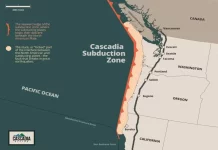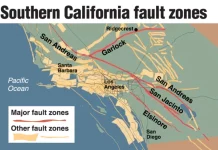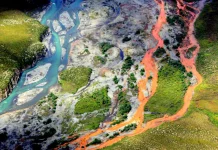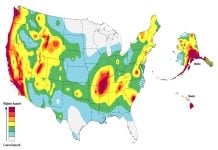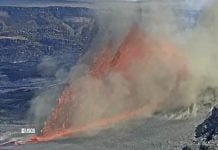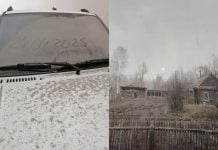Geologists have long thought tectonic plates move because they are pulled by the weight of their sinking portions and that an underlying, hot, softer layer called asthenosphere serves as a passive lubricant. But a team of geologists at the University of Houston has found that layer is actually flowing vigorously, moving fast enough to drive plate motions.

Geologists Discover Powerful ‘River of Rocks’ Below Caribbean. An image of the Earth’s warped surface of the Caribbean shows its tilted due to the east-flowing mantle underneath the Caribbean that pushes up the western Caribbean. via NatureIn their study published in Nature Communications, researchers from the UH College of Natural Sciences and Mathematics looked at minute changes in satellite-detected gravitational pull within the Caribbean and at mantle tomography images – similar to a CAT Scan – of the asthenosphere under the Caribbean.
They found a hot “river of rocks” being squeezed from the Pacific Ocean through a gateway under Central America and reaching to the middle of the Caribbean Sea. This underground “river of rocks” started flowing eight million years ago, when the Central American gateway opened, uplifting the overlying seafloor by several hundred feet and tilting it to the northeast toward the Lesser Antilles.
“Without the extra support generated by this flow in the asthenosphere, portions of Central America would still be below sea level. The Atlantic and the Pacific Oceans would be connected without a need for the Panama Canal,” said study co-author Lorenzo Colli, assistant professor of geophysics, geodynamics and mantle structure in the Department of Earth and Atmospheric Sciences.
The findings have implications for understanding the shape of the Earth’s surface, of its evolution over time through the appearance and disappearance of shallows seas, low-lying land bridges and the forces that move tectonic plates and cause earthquakes.
Another fascinating discovery, according to the researchers, is the asthenosphere is moving six inches per year, which is three times faster than an average plate. It can move independently from the overlying plates and drag them in a different direction.
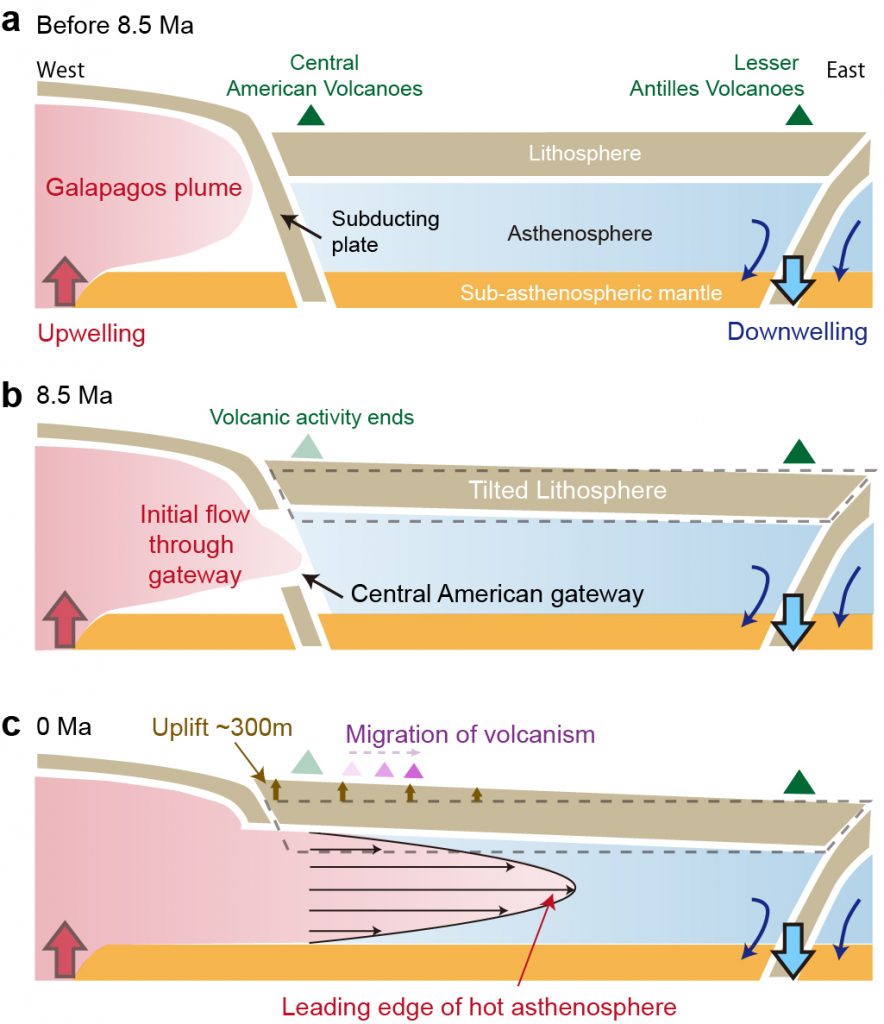
“This challenges the top-down notion that subduction is always the driver,” explained Jonny Wu, study co-author and assistant professor of structural geology, tectonics and mantle structure. “Think of the plates moving like an air hockey puck and being lubricated from below. Instead, what we found is the air hockey table is imposing its own currents on the puck that’s moving around, creating a bottom-up movement that has not been well recognized, and that’s being quantified here.”
Yes, this strong and fast flow of softer layer under tectonic plates is the reason why the caribbean is still over water… [UH]
Now subscribe to this blog to get more amazing news curated just for you right in your inbox on a daily basis (here an example of our new newsletter).
You can also follow us on Facebook and/ or Twitter. And, by the way you can also make a donation through Paypal. Thank you!


